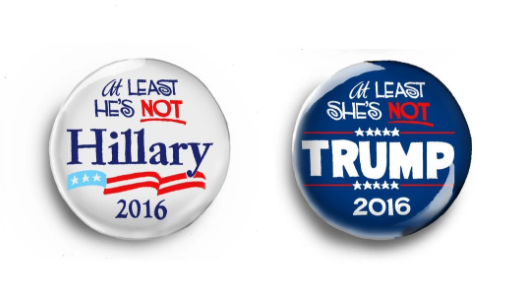The 2016 election has come and gone, with a stunning result. Now seems like as good a time as ever to analyze the results and figure out what marketing lessons can be learned.
NOTE: This post is not intended to be a partisan, political post. This post is intended to analyze the 2016 general election results and extrapolate marketing lessons that can be learned.
Besides Michael Moore, not a lot of people saw Hillary Clinton’s loss to Donald Trump coming. (If they did, it was certainly not as early as Moore predicted, or they were trying to overinflate Trump’s chances.) Yet, here we sit, on November 15, 2016, with Donald J. Trump as our president-elect.
With so many (all?) of the polls and pundits predicting a landslide victory for Hillary Clinton in this year’s general election, you have to stop and ask: just what the hell happened?
Watching the returns on election night, even the on-air anchors were clinging on to shreds of small evidence that Clinton could pull out a win. This, in the face of county and state results that showed an outperforming Trump and underperforming Clinton. They simply refused to believe this was happening, because we had all been led to believe otherwise. Clinton supporters were left feeling much the way the Romney supporters did in 2012, when Obama delivered a solid election win, and the networks were done with needing to call results well before midnight. This, even though Romney supporters were led to believe it would be a much tougher fight for President Obama.
There are many things that went wrong for the Clinton campaign – far too many for one blog post – so in this post I want to focus in on one BIG issue that faced Clinton and her supporters: branding.
Make no mistake about it: good political campaigns are no different than the branding campaign that your bank or credit union aspires to deliver to your market. All of the same tenants are there: internal culture, market awareness, brand position and presence, emotional reactions to the brand, and creating raving fans to share your message.
Yet, the Clinton campaign failed to deal with one big, huge, glaring brand issue: a majority of people hated the Clinton brand. And, by virtue of association, hated candidate Clinton. In a choice between Clinton or Trump, more people chose to sit this one out or vote third party (or write-in) than any election in recent history.
As early as August 2016, after the Democratic National Convention, The Washington Post ran an article with the results of a Washington Post-ABC News poll. Here’s what they found:


My Take
Instead of looking at these reactions of both the general population and registered voters, and attempting to affect positive change about it, the Clinton campaign doubled down on two other bets instead:
- Bank on the fact that a more unfavorable and less favorable opinion of Trump will lead their campaign to success.
- Drive home the unfavorable opinion by delivering more negative messages about Trump through advertising and stump speeches.
From a marketing and branding perspective, this is one of the dumbest possible things you can do.
Think about it in terms of your bank or credit union. If your organization was viewed this unfavorably (with those that favor you being FAR outweighed by those who do not), your plan of attack should not be to bet against your competitors or to run advertising campaigns against your competitors. A good branding plan would bring your key go-to-market tenants to center stage and reposition consumer’s opinion about your brand to a more favorable opinion.
Wells Fargo is currently embroiled in scandal and trying desperately to repair their brand image with the general public and their customers (those that aren’t leaving). But nowhere do I see Wells Fargo attacking Chase, US Bank, Bank of America or other financial institutions to try and dig themselves out of this hole. They’re working hard to restore their image by rebuilding their brand with positive messaging about how they are changing.
Inherently, people want to like the products they buy. It makes the exchange of dollars that much easier and really helps out with repeat business. It’s why when we rebrand a bank or credit union, one of the first things we ask staff is: what do you like about your current brand?
The Clinton campaign needed to pivot to a more positive branding message – essentially, talking about why you should be voting for them instead of not voting for Donald Trump. In the end, I believe that this is one of the major reasons the campaign lost. They couldn’t pivot away from the negative messaging from their own campaign or the messaging that their surrogates were running with on their behalf.
Every time you communicate with your market, you have the opportunity to build brand equity or destroy it. Make sure you’re building.






